Arduino UNO Q bridges high-performance computing with real-time control.
Beginner's Guide to Special Purpose Diodes and Their Applications
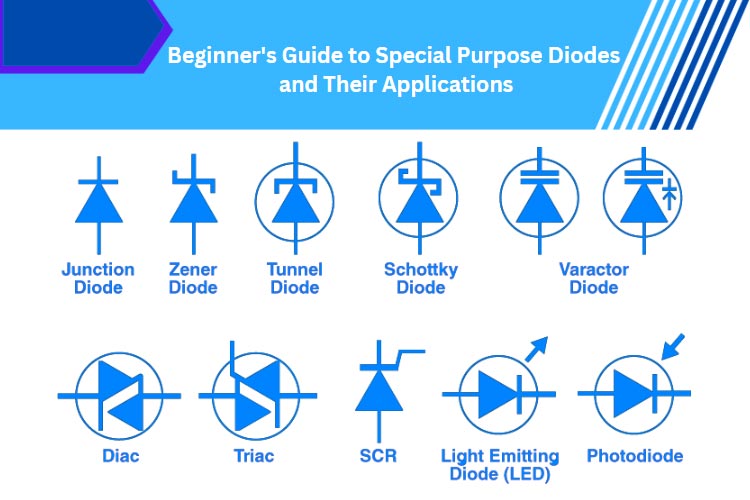
Diodes are one of the most commonly used semiconductor devices in various electronic circuits. A diode is a two terminal device that allows the flow of current in only one direction. Even though the majority are made of Silicon, there are diodes that are made up of other materials such as germanium. Even though we generally call them as diodes, there are many variants depending on the construction, operation and applications. As most of us know about the most common types such as rectifier diodes or small signal diodes, in this article we will discuss about other special purpose diodes that exists. Also check our previous article to learn basics of diodes.
Zener Diodes
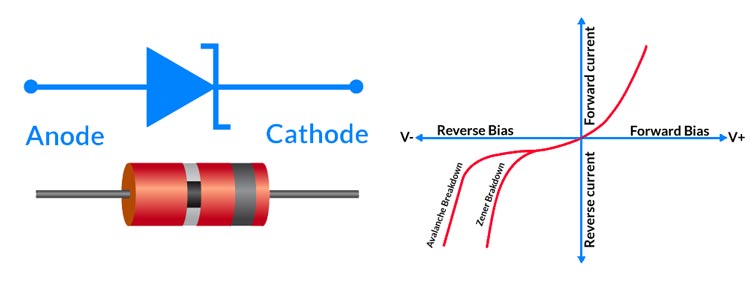
Zener diodes are a type of diode that generally used in reverse bias. In forward bias, the Zener diode operates just like a normal diode. But in reverse bias, the Zener diode will start conduct at a certain set voltage, which is much lower than a normal diode. This unique operation is called Zener breakdown, and the voltage at which it occurs is called Zener breakdown voltage. The Zener diodes has heavier doping concentration than a normal P-N junction diode and has much thinner depletion region. Zener diodes are generally used as voltage regulators, protecting sensitive components from voltage surges and fluctuations. They are also used in surge protectors, voltage limiters and voltage clamping circuits.
Schottky Diodes
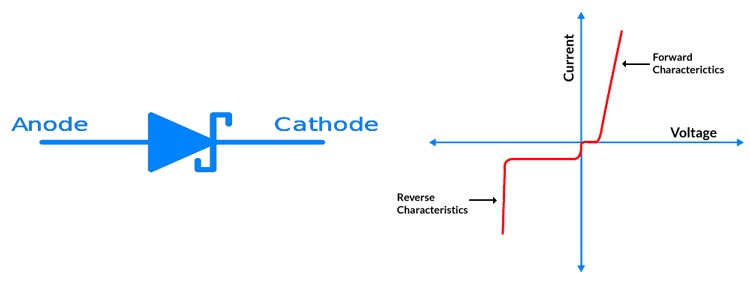
Schottky diodes are the type of diodes that has comparatively lower forward voltage and higher switching speed than a normal diode. Schottky diodes consists of an N-type material and a metal with a small junction in between them. As there is no P-N junction, this type of diodes has no capacitive junction and thus offers much faster switching speed. The limitation of Schottky diodes is that they have low reverse breakdown voltage and high reverse leakage current. Schottky diodes are used in power supplies, voltage regulators, and RF detectors.
Varactor Diodes
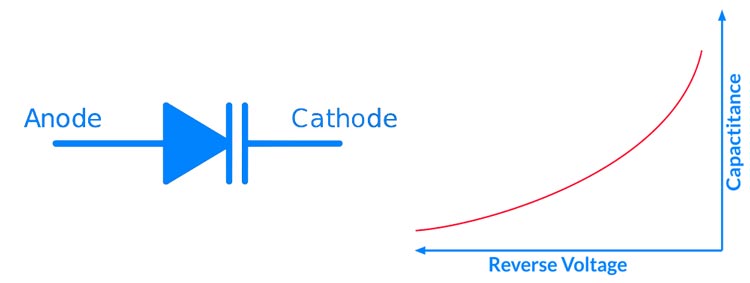
Varactor diodes, also known as the Vericap diodes or Tunning diodes are designed to function as voltage-controlled capacitor. They have a P-N junction with variable junction capacitance, and it will change with respect to the applied voltage. The varactor diode operates under reverse bias conditions. The junction capacitance is inversely proportional to the width of the depletion layer. The is, lesser the depletion layer width, higher the capacitance and vice versa. Thus, the capacitance can be increased by reducing the reverse bias voltage and can be decreased by increasing the reverse bias voltage. These diodes are used in various applications such as voltage-controlled oscillators (VCO), frequency multipliers, frequency modulators, and many other RF related circuits.
Light Emitting Diodes (LEDs)

We are very much familiar with the Light Emitting Diodes or the LEDs. They are every where and can be found in most electronics device. They are used as indicator devices as well as for decorative purposes. LEDs emits light when electric current is passed through it. The wavelength of the light that is produced is dependent on the type of material used to construct the devices. There are different LEDs that are capable of procuring different light spectrums from infrared to ultraviolet and visible spectrum colours. Depending on the material and colour, the forward bias voltage will differ. Other applications of the LEDs are in electronic signs, clock displays, and flashlights.
Photodiode
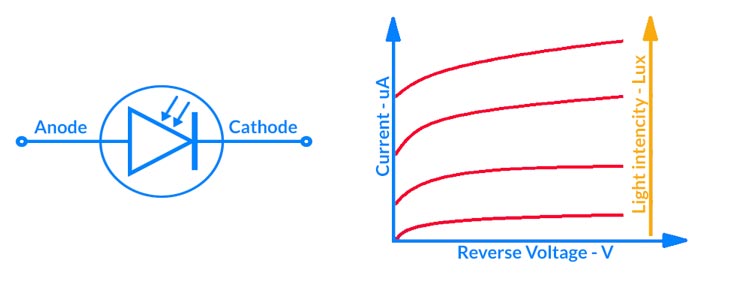
A photodiode is a PN junction diode that will produce electric current when exposed to light. They convert light energy into electrical energy. Every semiconductor diode is affected by optical charge carriers. It is why they are packaged in a light blocking material. In a photodiode instead of blocking the light we will expose the PN junction to the light. When the photons in the light strikes the PN junction, it creates electron-hole pairs, thus creates a current flow. They are also called a photodetector, a light detector, and a photo-sensor. Photodiodes are designed to work in reverse bias condition. Typical photodiode materials are Silicon, Germanium, and Indium gallium arsenide. They are used in many applications such as optocouplers, smoke detectors, solar panels, ambient light detectors and many more.
Tunnel Diodes
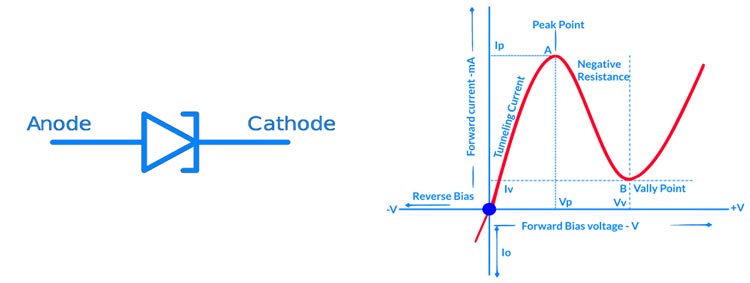
The tunnel diode is a heavily dopped heavily conductive PN-junction diode in which the current is induced because of tunnelling. The tunnelling is the phenomenon, in which the charge carriers in the semiconductor material are punch through the barrier instead of climbing through it. The tunnelling diodes will have an impurity concentration which is 100000 times higher than a normal PN junction diode. Because of the heavy doping, the diode conducts current both in the forward as well as in the reverse direction. It is a fast-switching device; thereby it is used in high-frequency oscillators, computers, and amplifiers.
Avalanche Diode
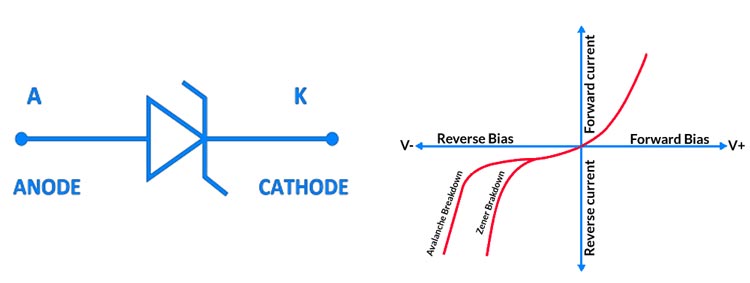
The Avalanche Diode are special PN junction diodes that are designed to operate in the avalanche breakdown region. Avalanche breakdown (or avalanche effect) is a phenomenon that can occur in both insulating and semiconducting materials. It is a form of electric current multiplication that can allow very large currents within materials which are otherwise good insulators. It is a type of electron avalanche. The avalanche process occurs when carriers in the transition region are accelerated by the electric field to energies sufficient to create mobile or free electron-hole pairs via collisions with bound electrons. Avalanche diode works electrically similar to Zener diodes. The main difference is that they have much lower doping concentration than a Zener diode. While the Zener diode has a small junction due to heavy doping, the avalanche diode has a wide junction due to the lower doping concentration, thus requires a higher voltage for its breakdown. The wide junction makes it a better surge protector than a Zener diode. The Transient Voltage Suppression (TVS) Diode is also a type of avalanche diode.
PIN Diode

The PIN diodes are a three-layer diode, which consists of three layers of P type, Intrinsic and N-type semiconductor materials. The intrinsic layer is placed in between heavily doped P and N type materials. The electron and holes from N and P-type region respectively flow to the intrinsic region. Once the intrinsic region fills completely with electron-holes, the diode starts conduction. At higher frequency, the PIN diode will act as a linear resistor. It is because the PIN diode has poor reverse recovery time. The reason is that the heavily charged intrinsic region does not get enough time to discharge during fast cycles. While at low frequency, it acts as a normal rectifier diode. PIN diodes are commonly used in high voltage rectification, in RF application as attenuator & switching element.









